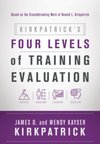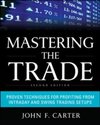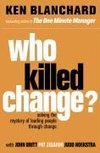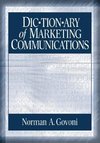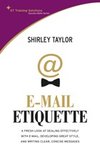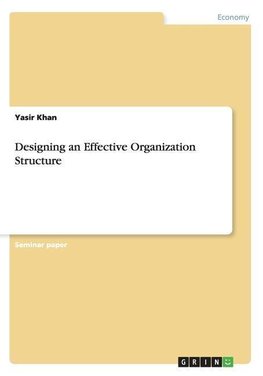
-
 Anglický jazyk
Anglický jazyk
Designing an Effective Organization Structure
Autor: Yasir Khan
Seminar paper from the year 2015 in the subject Business economics - Personnel and Organisation, grade: 16, National University of Modern Languages, Islamabad (NUML), course: MS-Business Management, language: English, abstract: In line with Taylor, Fayol,... Viac o knihe
Na objednávku
16.65 €
bežná cena: 18.50 €
O knihe
Seminar paper from the year 2015 in the subject Business economics - Personnel and Organisation, grade: 16, National University of Modern Languages, Islamabad (NUML), course: MS-Business Management, language: English, abstract: In line with Taylor, Fayol, and Weber's conceptualizations, traditional organization structures are essentially based upon the fundamentals of division of labor, need for supervision, and centralization or unity of command. Organizations following in the footsteps of these fundamentals may very well be regarded as effective as well as efficient, and are static (Takahashi & Takahashi, 2006).
Nonetheless, this framework would not work for organizations that practice a more complex, turbulent, and uncertain cultures like those working on innovation and uniqueness. This is because the framework for static organizations has rigid divisions and labor specializations, which do not fulfill the requirement of agility and flexibility required by innovative organizations. Here flexibility and agility not only limit to the employee performance, but also extends towards overall organization's capacity to bend as per the newly rising demands and customer needs. Here innovations are being stressed-upon because in today's world, the survival of any organization depends largely upon its capability to innovate and grow along; hence, to help organizations walkthrough these challenges, an affirmative role can verily be played by project teams, problem solving groups, and taks rotation that provide experience based learning, sharing of knowledge and increased interaction (Jensen et al., 2007). Despite the existence of a widespread retrospect on approaches for organizational structure that support organizational agility and flexibility to innovate - ultimately resulting in effectiveness - there still are quite a few companies out there that prefer going for the decision-making or coordination structures, and classical methodologies to address organizational goals; doing so eventually leads them to various challenges towards the attainment of organizational effectiveness and efficiency built upon innovation and competitive advantage which can be deemed most important organizational goal in the contemporary business environment (Worey & Lawler III, 2006). [...]
- Vydavateľstvo: GRIN Verlag
- Rok vydania: 2015
- Formát: Paperback
- Rozmer: 210 x 148 mm
- Jazyk: Anglický jazyk
- ISBN: 9783656886136


